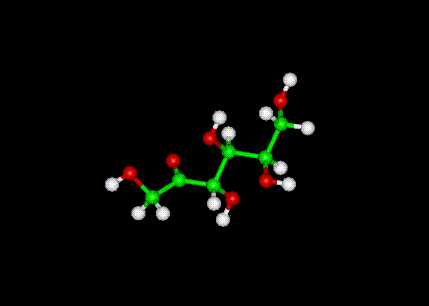Fructose, or levulose, is the form of sugar found in fruit and honey. It is a laevorotatory monosaccharide with the same empirical formula as glucose but with a different structure. Although fructose is a hexose (6 carbon atoms), it generally exists as a 5-membered hemiketal ring (a furanose).
All fruit naturally contains a certain amount of fructose (often together with glucose), and it can be extracted and concentrated to make an alternative sugar.
Fructose is often used
in food products designed for people with diabetes
mellitus or who have problems with hypoglycaemia,
because it is metabolised more slowly than cane
sugar (sucrose) and is sweeter, so it has a smaller
effect on blood-sugar levels. However, some people
can react badly to fructose so it is not an option
for those who need to restrict sucrose intake

